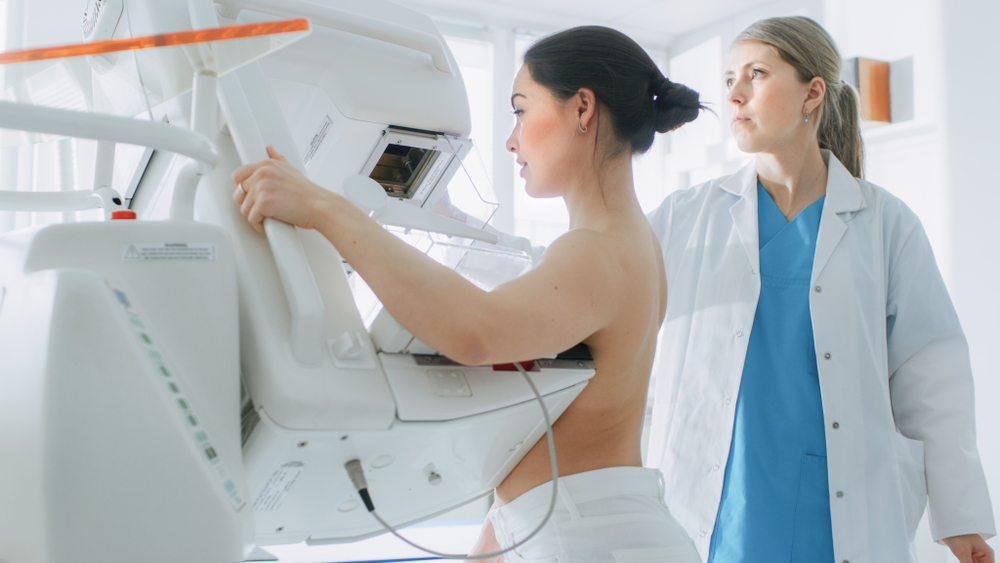Aside from skin cancer, breast cancer is the most common cancer in women regardless of race or ethnicity. There’s no doubt that cancer is devastating for the sufferers and their loved ones.
Thus, early detection and screening for all women are essential for preventative care. A mammogram provides valuable peace of mind for cancer concerns.
If you’ve never experienced mammography radiology, you may be skeptical or fearful about the process.
Let’s get into what you should expect for your first time.
Getting A Mammogram
Research shows that early detection of breast cancer can reduce your risk of dying by 25-35%. They are the most reliable method for detecting breast cancer. Studies show they detect up to 80% of cancerous cases.
Doctors recommend all women have yearly screenings starting at age 40. If you are at a higher risk, you may be advised to start younger. Some women start screening in their 20s or 30s. The procedure itself is very safe and non-invasive. Only a small amount of radiation exposure occurs.
There are different types of mammograms. If you have larger breasts or are younger than 50, you’ll typically have more breast tissue. A digital mammogram allows the technologist to zoom into the image to examine the breast tissue more clearly.
Some screening facilities also provide computer-aided detection (CAD). This is another method technologists use for closely examining the breast.
Preparing For Mammography Radiology
If you have the option, you should request to use a facility that specializes in mammograms and conducts many of them a day.
Aim to schedule your appointment at a time when your breasts will not be swollen or tender. This will help mitigate discomfort.
Many women experience bloating or swollen breasts during their periods or the week before. If your period is on a regular cycle, consider scheduling your appointment about 2-3 weeks after your period.
When showing up for the exam, don’t put on any fragrances or deodorant. These products can contain chemicals that may be detected as white spots on the x-ray results.
Wear comfortable clothing to the appointment. You’ll only need to undress above the waist.
Before the mammogram, make sure to describe any recent breast changes to the technologists.
Let them know if there is any history of breast cancer in you or your family. Make sure also to tell them if you’re breastfeeding or possibly pregnant.
Ideally, you’ll want to stay relaxed and calm during this procedure. It’s normal to feel somewhat anxious, but practice deep breathing during the process. You’ll find that the appointment goes by much faster!
If you’re especially sensitive to pain, take an acetaminophen or ibuprofen a half hour before the test.
During the Mammogram
As mentioned, you’ll undress above the waist during your appointment. Most facilities will provide you with a wrap to wear.
The technologist will appropriately position your breasts for the mammogram. She will place your breasts directly on the plate. At this point, the plastic plate lowers to flatten your breast for a few moments while the technologist takes the picture.
The flattening is important because motion can rupture the image. Also, it’s hard to see everything if there is overlapping tissue. A flattened breast makes it easy for the technologist to scan over everything.
This process can range from mildly uncomfortable to moderately painful. This will depend on your breast tissue and size. However, the actual compression only lasts a few seconds.
If the process hurts too much, speak up! Technologists will work with you to make sure that you feel comfortable during the process.
That said, the pain is similar to stubbing a toe. Even though it may hurt a lot, the pain subsides very quickly, often within the next minute. Furthermore, some women report no pain at all.
For a typical mammogram, the technologist obtains two views of each breast. One is an up-and-down view and the other is a side view.
However, if you have large breasts or implants, you may need more pictures. If you have implants, the technologist will push back the implant to compress the tissue resting in front of it.
Mammogram Results
Your mammogram will be sent to your health care providers once the results come in. The clinic must then tell you your results within 30 days or ‘as quickly as possible,’ if cancer is present.
You’ll typically receive a letter in the mail first. However, you may also receive a phone call or email. If you haven’t heard within a week, be sure to follow-up.
Always consult with your doctor and discuss any concerns or questions you may have regarding results.
Baseline mammograms can be tricky because there are no other images available for comparison. This may require additional testing.
An abnormal screening doesn’t mean you have cancer. For example, you may have a cyst or another benign breast condition. Up to 10% of women need further tests to rule out cancer, but the majority of those women are cancer-free.
Regardless, any abnormal test requires follow-up. You want to make sure you can rule out any medical issues as soon as possible.
Ideally, you want to have all your mammograms conducted at the same center. This way the technologist can easily measure any changes.
If that option isn’t possible, make sure to hold onto copies. Additionally, have your clinic forward them to your new facility.
Final Thoughts
Mammography radiology doesn’t need to be a frightening experience. To date, it’s the best way to detect early breast cancer.
At MagView, we pride ourselves on providing premier breast imaging tracking solutions for facilities around the country. Check out our services and products today.
























![monitoring breast density shutterstock_1299510538-[Converted]](https://magview.com/wp-content/uploads/2023/05/shutterstock_1299510538-Converted.jpg)






















